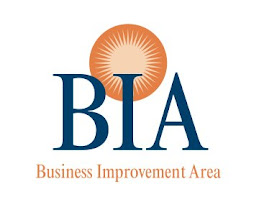While some in the mid-1990s still held that Tacoma's downtown would be transformed solely by the power of the arts, most civic and business leaders realized that places to shop are also pretty important. What took longer to evolve--and in some ways is still emerging--is a strategy to foster a successful retail environment here.
Seattle consulting firm Maestri Design, Inc. was retained by the City of Tacoma in 2004 to provide recommendations for improving downtown retail. At an evening event (“Retail Transformations”) co-sponsored by the BIA, Maestri president Paula Rees used a “magic wand” to emphasize the sweeping changes impacting Tacoma’s urban center. Rees said downtown had a “credible” collection of businesses that could form the core of a vital retail experience.
Rees concluded that downtown could accommodate as much as 225,000 square feet of additional retail activity to meet current demand. While that finding was contrary to some long-held opinions that downtown, for all of its changes, still lacks the consumer base to support more shops and restaurants, she said the demand for downtown retailers was coming from office workers, a growing number of downtown residents, and visitors from surrounding neighborhoods.
Rees and other consultants from Maestri unveiled eight specific recommendations to improve downtown’s retail environment:
- Consolidate downtown retailers into clusters, no larger than four blocks long, and encourage retailers to locate there;
- Develop consistent identities for retail clusters, much like the readily identifiable Pioneer Square neighborhood in Seattle, and use consistent place names on transit stops, maps and marketing materials, among other things;
- Devote more money and programs--including security patrols, trash pick up and community events--to retail clusters;
- Re-examine regulations that require retail space in new buildings, and give developers the option of temporarily using new retail space for other things, such as offices or housing;
- Rationalize signage and improve wayfaring to help shoppers navigate downtown and find retail locations, in addition to better signs to direct motorists to parking garages and lots;
- Develop a parking program that encourages shopping and discourages “chain” parking;
- Adopt a more confident and original marketing stance, embracing the vision of a downtown retail environment that features small, unique businesses, similar to Seattle's Belltown neighborhood;
- Help downtown entrepreneurs by offering incentives like grants for downtown retail projects and low-interest loans to fix up storefronts.
Since that time, the BIA has supported “Retail Transformations” through a variety of activities and investments:
- Created and manages a system of colorful street banners on downtown arterials;
- Funded directional signage in partnership with the City and the Foss Waterway Owners Association;
- Installed decorative stars during the Holiday Season for the Downtown Merchants Group;
- Funded refurbishment of street planters and funds hanging flower baskets during the warmer months.
How well are these strategies working? How important are they to the continued success of Tacoma's city center?


No comments:
Post a Comment